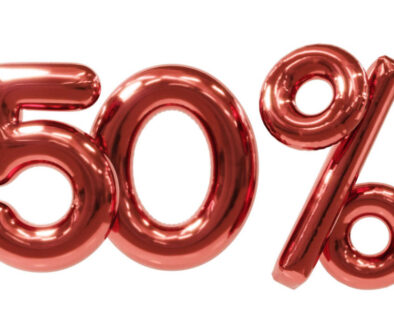Analyzing Conversion Rates to Identify Weak Points in Your Funnel
Unlock the secrets to maximizing your marketing funnel by analyzing conversion rates. Identify weaknesses and boost your sales strategy effectively!
Understanding conversion rates is crucial for any business looking to optimize its marketing funnel. This comprehensive guide will delve into the intricacies of conversion rates, explaining their significance, how to analyze them, and the best strategies to identify and address weak points in your funnel. By the end, you will be equipped with actionable insights to enhance your sales processes and ultimately drive more conversions.
IntroductionIn today’s competitive market, just having a product or service isn’t enough. Businesses need to ensure that their marketing efforts lead to conversions, which can be defined as the actions taken by potential customers that align with your business goals, such as making a purchase or signing up for a newsletter. Analyzing conversion rates is the key to understanding how effectively your marketing strategies are working and where improvements can be made.Every step in your marketing funnel represents an opportunity for a potential customer to convert. However, some stages may exhibit lower conversion rates than others, indicating that there are weaknesses to address. This blog post will explore how to analyze conversion rates, identify weak points in your funnel, and implement effective strategies to improve overall performance.Understanding Conversion Rates
– Conversion rates are essentially the percentage of users who take a desired action out of the total number of visitors. For example, if 100 people visit your site and 2 make a purchase, your conversion rate is 2%. This simple metric can reveal so much about the effectiveness of your marketing funnel.- According to industry standards, an average conversion rate hovers around 2-5%, but this can vary significantly depending on industry, target audience, and marketing strategies. Achieving a higher conversion rate often requires a deep understanding of your audience and a well-optimized sales funnel.- By closely monitoring conversion rates at each stage of your funnel, you can pinpoint exactly where drop-offs occur. This enables you to focus your efforts on optimizing those specific areas for greater success.
Analyzing Your Funnel: Key Metrics to Track
– To effectively analyze your conversion rates, it’s essential to track key performance indicators (KPIs) at each stage of your funnel. Start with metrics such as click-through rates (CTR), bounce rates, and time spent on page. These metrics can provide insights into user engagement and reveal potential barriers to conversion.- For instance, if your CTR is high but your conversion rate is low, it suggests that while your marketing efforts successfully attract visitors, something in your funnel is preventing them from converting. This could be a lack of clarity on your landing page, a complicated checkout process, or even pricing concerns.- A/B testing can also play a crucial role in analyzing conversion rates. By testing different versions of your webpages or marketing materials, you can determine which variations resonate better with your audience and lead to higher conversions. This data-driven approach allows for continuous improvement of your funnel.
Identifying Weak Points in Your Funnel
– Once you have gathered data and analyzed your conversion rates, the next step is to identify where the weak points lie within your funnel. This often involves looking at the drop-off rates at each stage. For example, if you notice a significant drop-off between the landing page and the checkout page, this could indicate issues with your value proposition or a lack of trust signals.- Additionally, user feedback is invaluable in this process. Conduct surveys or gather insights through user testing to understand the pain points that potential customers experience in your funnel. This qualitative data can complement your quantitative analysis, providing a fuller picture of what’s happening.- It’s also important to consider external factors that may affect your conversion rates. Market trends, seasonal changes, or shifts in consumer behavior can all impact how customers interact with your funnel. Staying attuned to these factors can help you adapt strategies and optimize your funnel accordingly.
Optimizing Your Funnel for Higher Conversions
– After identifying weak points, it’s time to implement strategies for optimization. Start by enhancing the user experience on your website. This includes ensuring fast loading times, intuitive navigation, and mobile responsiveness, as a significant portion of users access websites via mobile devices.- Clear and compelling calls to action (CTAs) are also crucial. Make sure your CTAs stand out and communicate the benefits of taking the next step. For example, instead of a generic “Submit” button, consider using something more enticing like “Get Your Free Trial” or “Unlock Your Discount.”- Content plays a vital role in conversion optimization as well. Use persuasive copy that addresses customer pain points, showcases benefits, and builds trust. Incorporating testimonials and case studies can also help establish credibility and alleviate concerns.
The Role of Retargeting and Follow-Up
– Even with the best optimization efforts, not every visitor will convert on their first visit. This is where retargeting strategies come into play. Retargeting involves displaying ads to users who have previously interacted with your brand, reminding them of their interest and encouraging them to return and complete their purchase.- Email follow-up campaigns can also serve as a powerful tool for recapturing potential customers. If someone abandons their cart, sending a personalized email with a reminder or an incentive can often lead to higher conversion rates.- Implementing these follow-up strategies not only helps in converting undecided prospects but also fosters a relationship with your customers, making them more likely to return in the future.
Frequent Testing and Iteration
– Continuous improvement is essential for maintaining and enhancing conversion rates. Adopt a mindset of frequent testing and iteration. Regularly review your funnel metrics and make adjustments based on what the data reveals.- Consider setting up a feedback mechanism on your website. Encourage users to share their experiences, and utilize this feedback to make informed decisions about further optimizations.- Utilizing analytics tools can also help streamline this process. Platforms like Google Analytics or specialized funnel analysis tools can provide deeper insights into user behavior, helping you refine your strategies effectively.
Conclusion
In summary, analyzing conversion rates is a fundamental practice for any business aiming to optimize its marketing funnel. By understanding the metrics that matter, identifying weak points, and deploying effective strategies for improvement, you can significantly enhance your conversion rates and drive business success. Remember, optimization is an ongoing process that requires vigilance and adaptability to market changes.Now is the time to take action! Begin analyzing your conversion rates today, identify areas for improvement, and implement the strategies discussed. If you’re looking for expert guidance, consider reaching out to a pool business broker like Tower Business Brokers to help you navigate the complexities of the pool maintenance industry and boost your business’s success.



